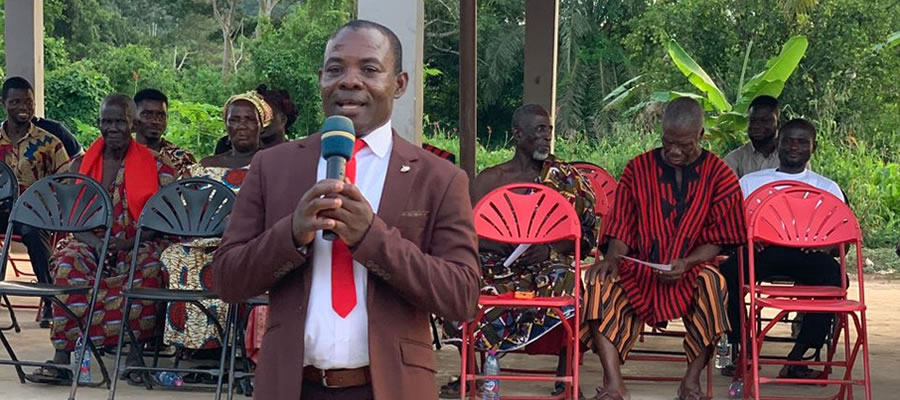

Relevant Data
Location and Size
Mfantseman Municipal is sited along the Atlantic coastline of the Central Region of Ghana. It stretches approximately 21 kilometres along the coastline and about 13 kilometres inland constituting an area of 300.662 square kilometres. The proportion of land area of the municipality to that of the region is 3.1 percent.
The administrative capital of Mfantseman is Saltpond. Mfantseman is bounded on the West by Abura-Asebu-Kwamankese District, on the North East by Ajumako-Enyan-Essiam District, on the East by Ekumfi District and on the South by the Gulf of Guinea (Atlantic Ocean). It stretches from Eguase (the most western point) to Mankessim (the most Eastern point).
Climate
Mfantseman has an average temperature of 24oC and relative humidity of about 70 percent, with double maximum rainfall with peaks in May-June and October. Annual total rainfall ranges between 90cm and 110cm in the coastal savannah areas and between 110cm and 160cm in the interior close to the margin of the forest zone. Dry seasons usually occur from December to February and from July to September.
Mfantseman is about 60 metres above sea level and is drained by a number of rivers and streams including the Nkasaku, which empties into the Atufa lagoon in Saltpond and Aworaba which drains into Etsi lagoon in great Kormantse. Other lagoons in the area are the Eko near Anomabo, the Egya at Egyaa and Kwasinzema at Kormantse into which flow small streams and rivulets. It is low lying with loose quaternary sands along the coast and is characterized by undulating coastal dense scrub and grassland with isolated marshy areas.
Soils, Geology and Minerals
The municipality is endowed with rich natural resources including talc, granite, silica and kaolin of commercial grade which are used in building construction and the ceramics industry. Petroleum and natural gas (not yet exploited) are also found in the continental shelf off-shore of Saltpond. Other natural resources which are yet to be exploited include beryl at Saltpond and the areas between Winneba and Mankessim, feldspar at Biriwa and Moree, spondumene (lithium) at Saltpond, uranium at Abandze, columbite and tantalite at the coastal belt between Cape Coast and Saltpond.
Vegetation
This consists of dense scrub tangle and grass, which grow to an average height of 4.5m. It is believed that the municipality was once forested, but has been systematically destroyed through centuries of bad environmental practices. However, pockets of relatively dense forest can be found around fetish groves and isolated areas. These physical characteristics have combined effectively to offer opportunities in agriculture (farming and fishing) to the people.
Date Created : 11/30/2017 8:11:49 AM











 facebook
facebook
 twitter
twitter
 Youtube
Youtube
 +233 593 831 280
+233 593 831 280 0800 430 430
0800 430 430 GPS: GE-231-4383
GPS: GE-231-4383 info@ghanadistricts.com
info@ghanadistricts.com Box GP1044, Accra, Ghana
Box GP1044, Accra, Ghana